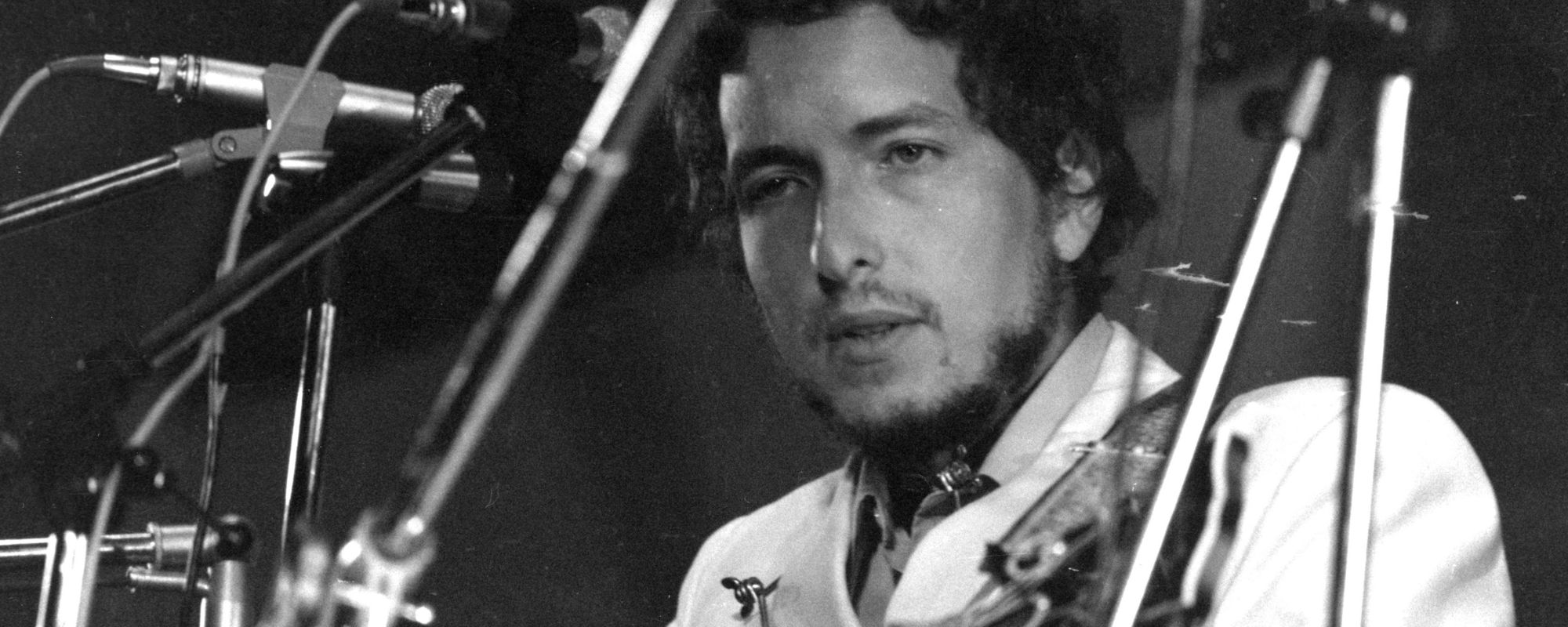How do you come up with a different method of describing a broken heart? After all, songwriters have heavily mined this topic pretty much since music began. It’s tough to believe you aren’t retracing well-trodden steps when you write such a song.
Videos by American Songwriter
Leave it to Bob Dylan to come up with something somewhat novel. The narrator of “Most of the Time” tells us all the ways the loss of his lover is tearing him apart. But only indirectly, as he puts up a brave front that cracks only now and again (or so he claims).
“Time” of the Season
Even for all the times he’d risen from the depths before, you probably wouldn’t have found too many people willing to bet on Bob Dylan coming up with a classic album in 1989. His recent track record, at that point, had been less than encouraging.
While the albums he released in the first half of the ’80s could certainly be filed under the category “Underappreciated in Their Own Time,” it’s much harder to find high points on the albums Knocked Out Loaded (1986) and Down in the Groove (1988). He seemed to be in a rut of forgettable albums dogged by mediocre material and questionable production choices.
Then came Oh Mercy, like a bolt from the blue. Dylan’s 1989 album received some of the best notices he’d garnered since the mid-’70s. The songwriting, much of which focused on lost love, was eloquent and inspired. And the record sounded modern without being overdone.
Looking back, we now know Dylan had found a sympathetic collaborator in Daniel Lanois. Lanois allowed Dylan to run through multiple versions of the songs. The process worked very well, as it’s hard to find fault with the takes and arrangements eventually selected. On “Most of the Time,” a kind of stammering drum effect lends just an extra bit of mystical atmosphere to Dylan’s lament.
Behind the Lyrics of “Most of the Time”
The title alone is a little bit of genius. “Most of the Time,” the narrator repeats, he is able to shrug off the aftereffects of a fractured relationship. But the thorough way in which he lists the hard hits he takes whenever his facade briefly cracks suggests the damage to his psyche and soul is still quite great.
I don’t even notice that she’s gone / Most of the time, Dylan tells us at the end of the first verse. He sounds almost proud at times of what he’s been able to achieve in getting over her: I can hold my own / I can deal with the situation / Right down to the bone. Even then, we worry he might be protesting too much and revealing his anguish: I ain’t afraid of confusion / No matter how thick.
I wouldn’t know her if I saw her / She’s that far behind, he promises. But as the song progresses, the nature of his affirmations take a turn. For example, when he sings, Most of the time, I can’t even be sure / If she was ever with me, or if I was ever with her, are we sure that’s a positive turn of events for him? She’s drifting from his mind’s eye, just as she drifted from his arms.
I’m halfways content, he says, revealing a mediocre existence. He moans, Don’t even remember / What her lips felt on mine / Most of the time, another example of memories that haunt him whether they’re washing over him or in abeyance. He finally tries to completely shake free, only for the title phrase to jump up and bite him all over again: I don’t even care / If I ever see her again / Most of the time.
Dylan’s vocal is wondrous on this track, betraying little bits of emotion that fly in the face of the character’s insistence about his strength. “Most of the Time” is a masterpiece example of how no amount of denial can cover up the pain of a special love’s deterioration.
Photo by Denver Post via Getty Images













Leave a Reply
Only members can comment. Become a member. Already a member? Log in.